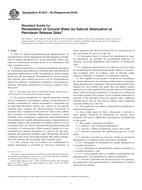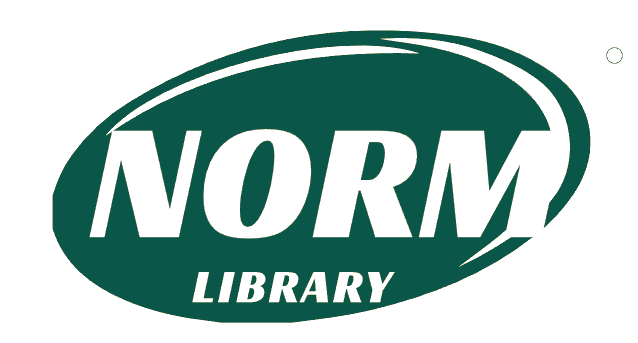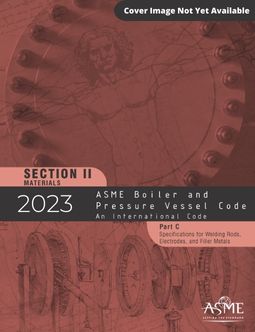
ASTM E1943-98(2010)
Original price was: $91.00.$55.00Current price is: $55.00.
Standard Guide for Remediation of Ground Water by Natural Attenuation at Petroleum Release Sites
standard by ASTM International, 09/01/2010
1.1 This is a guide for determining the appropriateness of remediation by natural attenuation and implementing remediation by natural attenuation at a given petroleum release site, either as a stand alone remedial action or in combination with other remedial actions.
1.2 Natural attenuation is a potential remediation alternative for containment and reduction of the mass and concentration of petroleum hydrocarbons in the environment to protect human health and the environment. Remediation by natural attenuation depends upon natural processes such as biodegradation, dispersion, dilution, volatilization, hydrolysis, and sorption to attenuate petroleum constituents of concern to achieve remedial goals.
Note 1 – Remedial goals must be established through another process as determined by the appropriate regulatory agency.
1.3 In general, remediation by natural attenuation should not be considered a presumptive remedy. A determination of whether remediation by natural attenuation is appropriate for an individual petroleum release site, relative to site-specific remedial goals, requires site characterization, assessment of potential risks, evaluation of the need for source area control, and evaluation of potential effectiveness similar to other remedial action technologies. Application and implementation of remediation by natural attenuation requires demonstration of remedial progress and attainment of remedial goals by use of converging lines of evidence obtained through monitoring and evaluation of resulting data. When properly applied to a site, remediation by natural attenuation is a process for risk management and achieving remedial goals. Monitoring should be conducted until it has been demonstrated that natural attenuation will continue and eventually meet remedial goals.
1.3.1 The primary line of evidence for remediation by natural attenuation is provided by observed reductions in plume geometry and observed reductions in concentrations of the constituents of concern at the site.
1.3.2 Secondary lines of evidence for remediation by natural attenuation are provided by geochemical indicators of naturally occurring degradation and estimates of attenuation rates.
1.3.3 Additional optional lines of evidence can be provided by microbiological information and further analysis of primary and secondary lines of evidence such as through solute transport modeling or estimates of assimilative capacity.
1.4 The emphasis in this guide is on the use of remediation by natural attenuation for petroleum hydrocarbon constituents where ground water is impacted. Though soil and ground water impacts are often linked, this guide does not address natural attenuation in soils separate from ground water or in situations where soils containing constituents of concern exist without an associated ground water impact. Even if natural attenuation is selected as the remedial action for ground water, additional remedial action may be necessary to address other completed exposure pathways at the site.
Product Details
- Published:
- 09/01/2010
- Number of Pages:
- 43
- File Size:
- 1 file , 630 KB
- Note:
- This product is unavailable in Russia, Ukraine, Belarus



